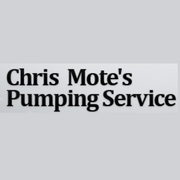A Pumping Service Explains the Difference Between Septic Tanks & Cesspools?

If your home isn’t connected to a municipal sewer system, you either have a cesspool or septic tank on your property. Understanding the difference between these two features is important for maintaining them properly. Here to shed light on the subject is the leading pumping service in the Cleveland, GA, area: Chris Mote’s Pumping Service.
A Pumping Service’s Guide to Septic Tanks vs. Cesspools
What Is a Septic Tank?
Septic systems comprise of several components, with the two most important features being the septic tank and the drain field. Typically made from concrete or fiberglass, tanks can hold up to 1,000 gallons of sewage. Pipes connected to your home transport waste to the tank, where it is then separated. Solids stay at the top and form a layer of sludge while liquids flow out into the drain field.
 Septic tanks can be situated partially or completely below the ground. Inside these containers, there is naturally occurring bacteria which is used to treat waste. After the wastewater is treated and returns to the drain field, it makes its way deep into the ground, returning to the water table.
Septic tanks can be situated partially or completely below the ground. Inside these containers, there is naturally occurring bacteria which is used to treat waste. After the wastewater is treated and returns to the drain field, it makes its way deep into the ground, returning to the water table.
What Is a Cesspool?
Cesspools are always buried and are typically located 15 to 20 feet below ground. While septic tanks only contain human waste, cesspools are used to store all types of sewage material. They are similar in shape and size to septic tanks but do not treat waste in the same way septic systems do.
Cesspools require more frequent pumping services than septic tanks. Regularly scheduled services are essential for preserving the quality of nearby drinking water; without regular pumping, the cesspool could overflow and contaminate the surrounding groundwater.
Whether you have a cesspool or a septic system, Chris Mote’s Pumping Service can help you keep your tank well-maintained with regularly scheduled pump outs. To schedule pumping services, call (770) 530-2034. Or, learn more about the company’s full line of services online.
About the Business
Have a question? Ask the experts!
Send your question

